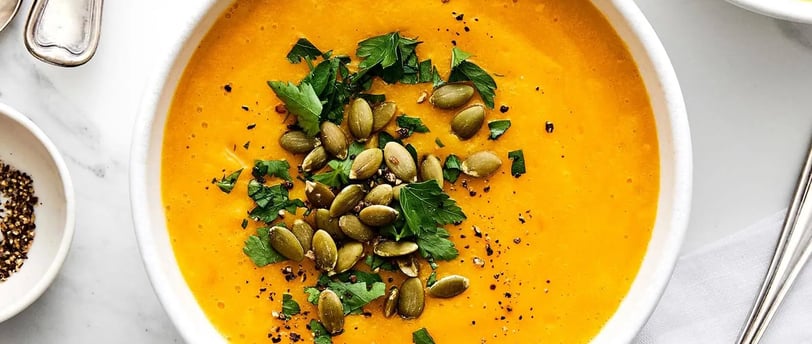Embrace the Seasons: A Guide to Eating with Nature
Today, we're exploring the benefits of seasonal eating and how it can enhance your health and well-being.
10/23/20242 min read


Why Seasonal Eating?
Seasonal eating means enjoying fruits and vegetables at their peak, when they're freshest, most flavorful, and often most nutritious. Eating seasonally supports local farmers, reduces your carbon footprint, and helps you connect with the year's natural rhythms.
What's in Season?
Each season brings its own bounty. In spring, look for tender greens, asparagus, and strawberries. Summer brings an abundance of tomatoes, zucchini, and berries. Autumn is the time for root vegetables, pumpkins, and apples, while winter offers hearty greens, citrus fruits, and squash.
Benefits of Seasonal Eating
Better Taste: Seasonal produce is harvested at its peak, ensuring optimal flavor and freshness.
Nutrient Density: Fruits and vegetables grown in season often contain more nutrients.
Environmental Impact: Choosing seasonal produce reduces the need for long-distance transportation and energy-intensive storage, benefiting the environment.
Winter Recipes to Keep You Nourished
As winter settles in, it’s the perfect time to embrace warm, comforting dishes that highlight seasonal ingredients. Here are some ideas for morning, afternoon, and dinner recipes to keep you satisfied and healthy all winter long
Winter Morning Recipes
Warm Apple Cinnamon Oatmeal
Servings: 2
Portions: 1 cup (240ml) cooked oatmeal per serving, with 1/2 an apple and 1 tablespoon of chopped walnuts each.
Description: Start your day with a warm bowl of apple cinnamon oatmeal topped with fresh apple slices and walnuts, offering a comforting blend of flavours and omega-3s from the nuts.
Spiced Pear Smoothie
Servings: 2
Portions: 12 ounces (355ml) per serving.
Description: Blend ripe pears with spinach, fresh ginger, chia seeds, and almond milk for a refreshing yet warming smoothie to energize your morning.
Sweet Potato and Kale Frittata
Servings: 4
Portions: 1/4 of a 9-inch (23cm) frittata per serving.
Description: Sauté diced sweet potatoes and kale in olive oil, then add beaten eggs for a protein-rich breakfast that’s both hearty and
nutritious.
Winter Afternoon Recipes
Roasted Butternut Squash Soup
Servings: 4
Portions: 1 1/2 cups (360ml) per serving.
Description: Enjoy a creamy bowl of roasted butternut squash soup, garnished with a swirl of coconut milk and pumpkin seeds for a nourishing, flavour-packed lunch.
Quinoa and Roasted Veggie Salad
Servings: 2
Portions: 2 cups (about 300g) of salad per serving.
Description: Toss cooked quinoa with roasted Brussels sprouts, carrots, and beets. Add pomegranate seeds and a balsamic vinaigrette for a satisfying and colorful salad.
Mushroom and Barley Risotto
Servings: 4
Portions: 1 cup (180g) of risotto per serving.
Description: Sauté mushrooms with garlic and thyme, then stir in barley and a splash of white wine for a hearty, winter-perfect risotto.
Winter Dinner Recipes
Spaghetti Squash with Lentil Marinara
Servings: 4
Portions: 1 cup (about 150g) of spaghetti squash topped with 1/2 cup (120ml) of lentil marinara per serving.
Description: A warming dish of spaghetti squash topped with a rich lentil marinara sauce, combining winter comfort with nutritious ingredients.
Braised Cabbage and White Bean Stew
Servings: 4
Portions: 1 1/2 cups (360ml) per serving.
Description: Braise cabbage with white beans, carrots, and vegetable broth. This stew, seasoned with smoked paprika, offers a hearty and satisfying end to your day.
Baked Cod with Citrus and Fennel
Servings: 4
Portions: One 6-ounce (170g) cod fillet with 1/2 cup (75g) of fennel and citrus per serving.
Description: A tender cod fillet baked over a bed of fennel and orange slices, drizzled with olive oil and served with winter greens for a light yet nourishing dinner.
Explore vibrant recipes and holistic health tips.
Join Our Vibrant Community
© 2024 Fizzy Kiwi. All rights reserved.
